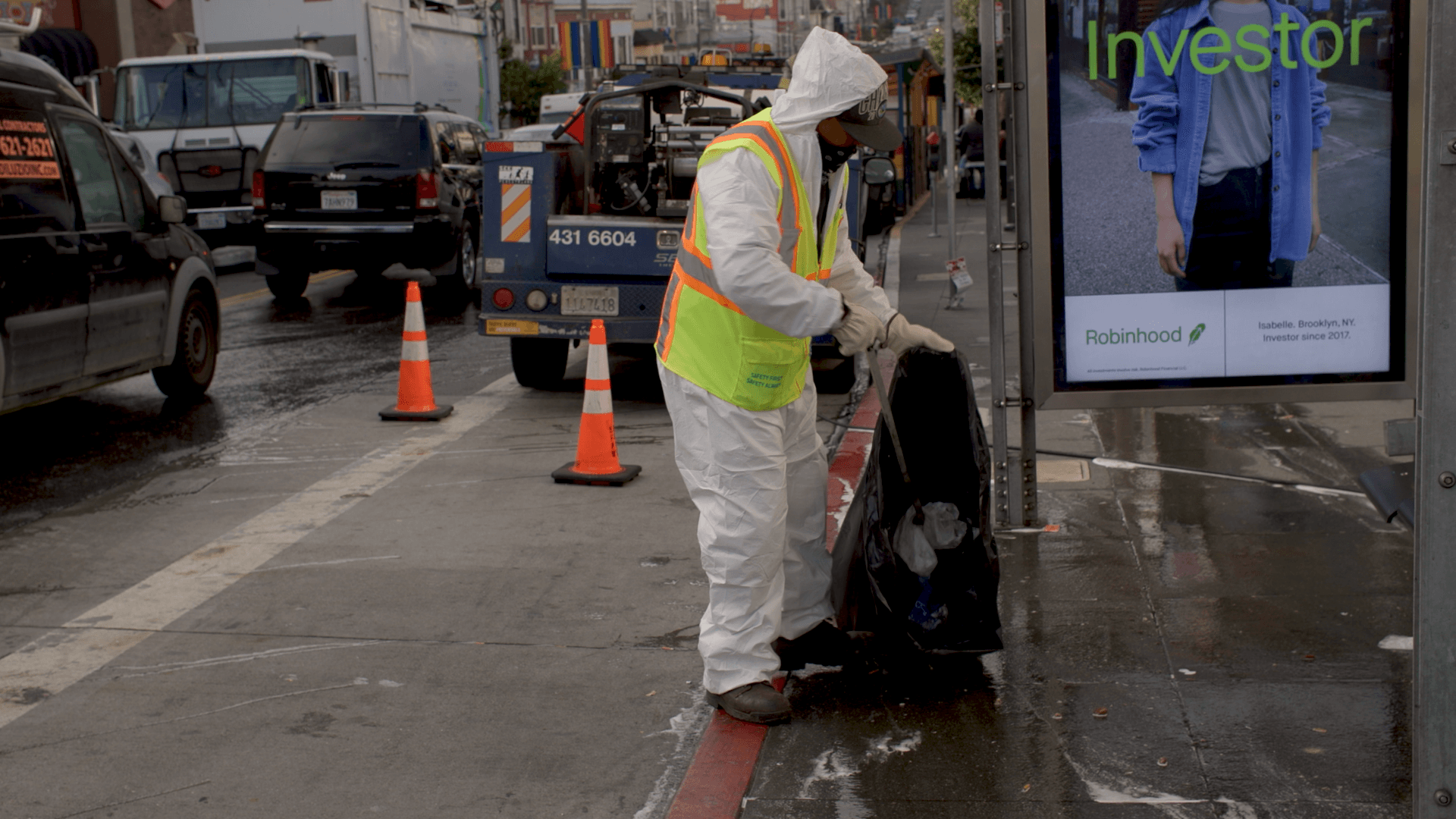For neighborhoods that deal with the Sisyphean task of keeping streets clean, the city’s existing customer service sometimes doesn’t cut it.
For some of the most common complaints, such as loose trash, graffiti or feces, it can take hours or even days for a crew from the city’s Department of Public Works to resolve the issue. That’s partly due to redundancy and confusion between cleanup crews employed by the Department of Public Works and privately-funded community benefit districts, or CBDs, that work in high-traffic commercial corridors.
The city is hoping that a technological fix will change that. An app called Connected Worker, which was introduced on a pilot basis last year, promises to dramatically improve response times for everyday cleanup while better integrating private CBDs into the city’s expansive 311 system.
“The benefit to the city and neighborhood is that the response time is significantly faster,” said Andrew Robinson, executive director of the East Cut CBD, which has 22 full-time staff working 24 hours a day. “We want to respond to those things, and make sure our data is also in the city’s system so the city can see what we’re doing.”
The city’s 311 customer service system processes roughly 50,000 calls for service in a typical month. Requests for cleaning make up the lion’s share of those requests: In October, about 40% of all 311 requests were for street and sidewalk cleanup. The city’s 17 active CBDs, which serve limited geographic areas and are funded by local businesses and property owners, are often already at the scene and can respond to those requests much more quickly than city teams.
Until recently, however, the CBDs and Public Works cleaning crews had no easy way to communicate. That meant that city crews would arrive at a cleanup scene only to find that it had already been handled by a private neighborhood crew, creating wasted time and effort across Public Works’ response system.
“My hunch is that it would often mean the city wouldn’t send someone out as fast,” added Robinson. “[The app] has really improved communications.”
The recent push is part of Shine On SF, a public-private initiative launched by Mayor London Breed to scrub down and beautify San Francisco neighborhoods. With a carve-out of about $92 million from this year’s budget, the initiative includes funding for dedicated cleanup along key commercial corridors, trash can replacements, and improvements to the 311 response system, among other efforts.
“Sometimes things just aren’t run the best they could be,” Noaeh Pinaire, a laborer with Public Works who scrubs down Castro Street as part of the new beautification efforts, told Here/Say in a recent interview. “In essence, [it’s] the allocation of resources…maybe people are getting put in areas that necessarily don’t need all that manpower. I think it’s just small things like that.”
The Mayor’s Office frames the cleanup efforts as part of a broader recovery, positing that cleaner and better cared-for streets will make San Francisco a more inviting place to visit as the city’s battered tourism sector crawls back from COVID.
Using general fund money, the city commissioned developer Connected Bits, which also built the external 311 app, to create an app for cleanup workers in the field. That allows CBD workers to address and resolve complaints within the city’s existing 311 infrastructure, freeing up more time for Public Works staff to respond to citywide complaints.
The average resolution times using the app were significantly faster compared to comparable calls routed through 311: Loose trash cleanup took about 5 hours on average with the app, compared to 34 hours citywide, according to data provided by the city. Public graffiti cleanup took 4 hours, compared to 6 days. Neighborhood CBDs must opt in to the app, and six of the city’s 17 CBDs are participating right now.
Robinson said that the “long game” is to build a unified response system that includes all CBDs, and perhaps even other nonprofits that provide maintenance or safety services in San Francisco neighborhoods.
“The sidewalks in front of your house or business…often have more intense use than anyone should ever be expected to take care of,” Robinson said. “Now I’m able to invest the money I’m putting into responding to calls into more work on the streets.”
